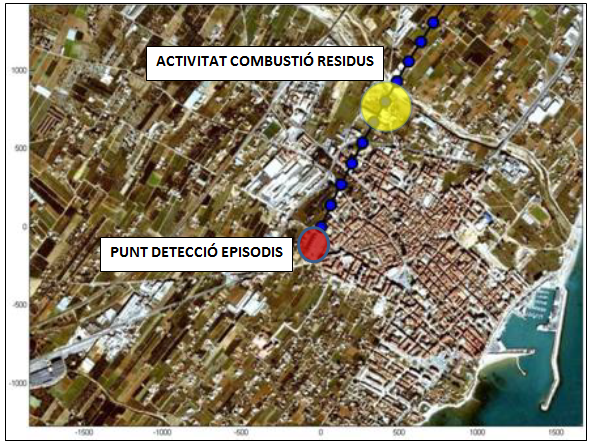Back-trajectories. Origin of pollution/odorous episodes in urban areas
The determination of the origin of pollution/odorous episodes can be done through the use of mathematical numerical models with the following information:
- Date and time of the episode detection
- Place of the episode detection
A suitable numerical model (that would fit correctly to the orography of the studied area) allows us to the calculation of the back-trajectory of the air mass located in the episode detection point. The course of the air mass back in time (1 to 5 minute intervals) can be outlined and the axis of the plume determined. Its representation in a map reflects the activity or activities that are lined with the trajectory of the air mass. Additionally, if chemical control is done together with the back-trajectory calculation, a chemical tracer could be assigned to a concrete activity when the back-trajectory passes over more than one emission source.
Back-trajectory of a pollution episode indicating its origin |
Back-trajectories of two points with odour episodes detection |
Bibliography
- Gallego, E., Alarcon, M., Roca, F.J., Perales, J.F., Soriano, C, Guardino, X., “Identification of the origin of odour episodes through social participation, chemical control (DT-GC/MS) and numerical modelling”, Atmospheric Environment,42, 8150-8160 (2008)
- Roca, F.J.,Gallego, E., Perales, J.F., Guardino, X., “Simultaneous evaluation of odor episodes and air quality. Methodology to identify air pollutants and their origin combining chemical analysis (TD-GC/MS), social participation and mathematical simulations techniques“ Air Quality in the 21 st Century, pp. 139-209, ISBN 978-1-60456-793-9 NovaPublishers, NY, (2008)


Share: